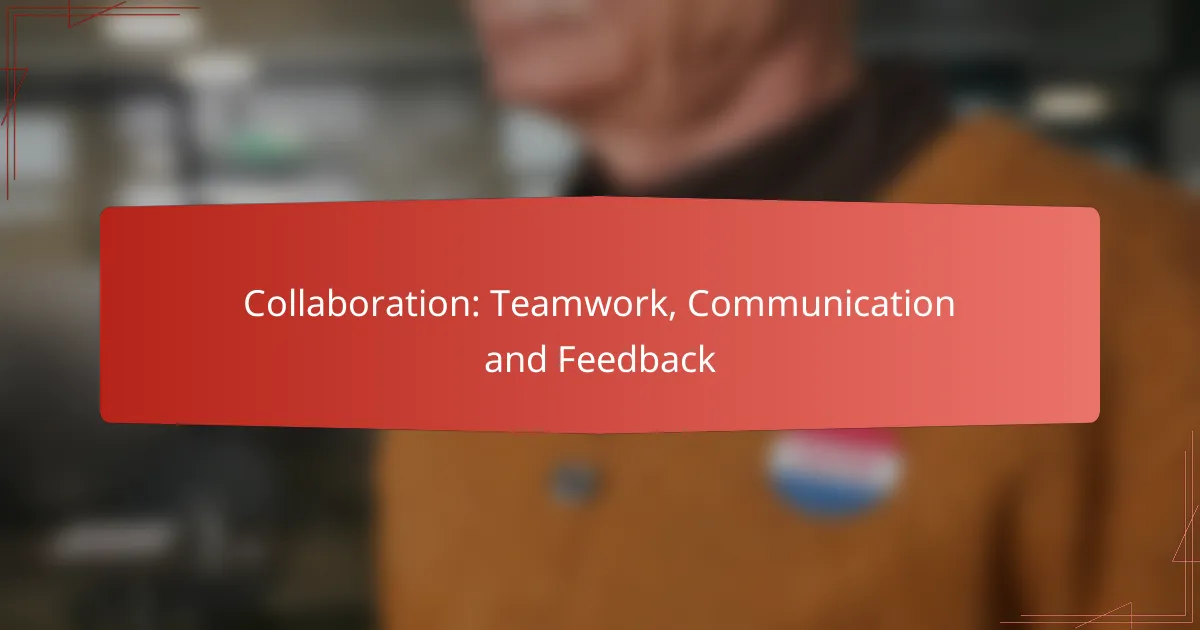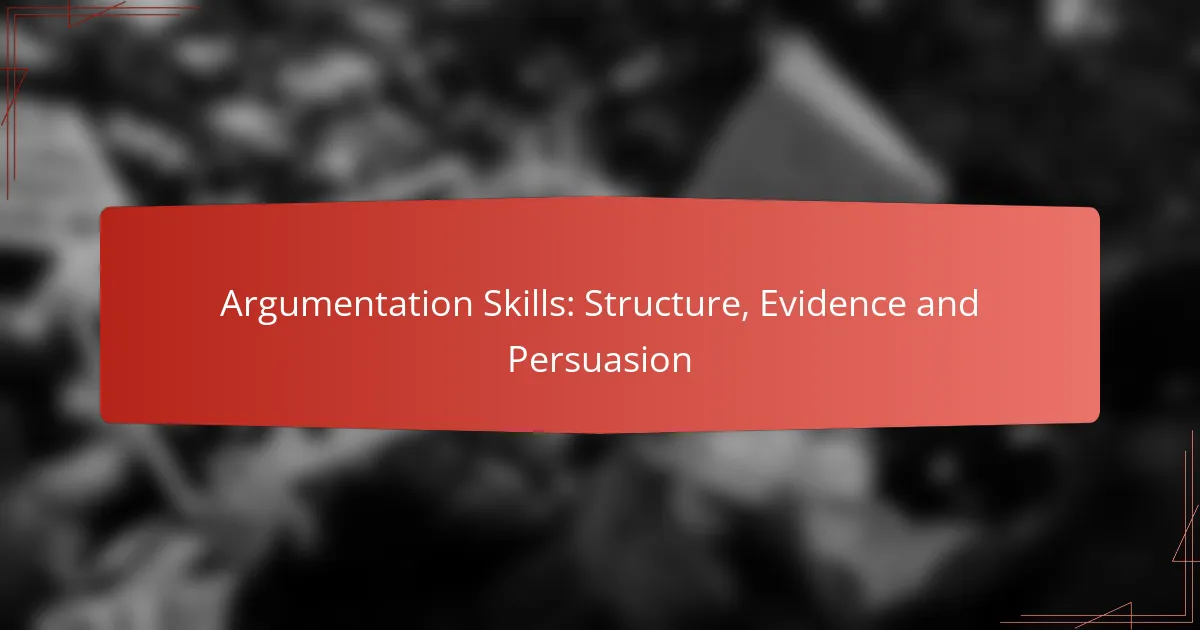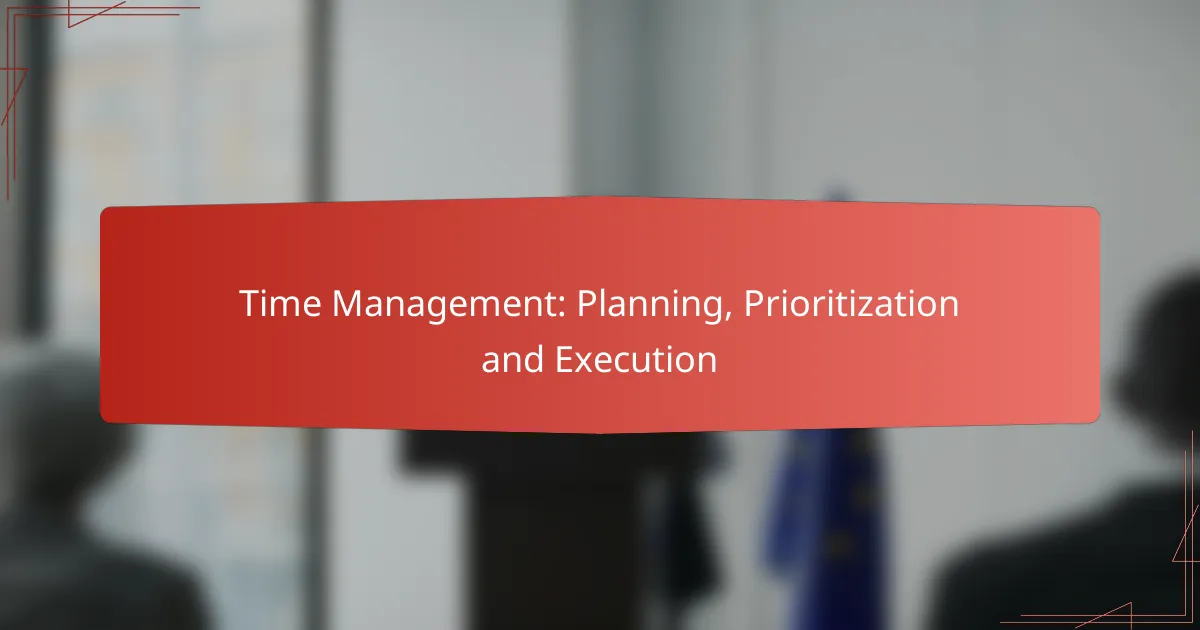Collaboration is essential for effective teamwork, as it brings together diverse skills and perspectives to achieve shared objectives. By fostering open communication and encouraging constructive feedback, teams can enhance their performance and create a culture of continuous improvement. Utilizing the right tools further streamlines collaboration, ensuring that all members are aligned and engaged in the process.

How can effective teamwork improve collaboration?
Effective teamwork enhances collaboration by fostering a shared sense of purpose and aligning individual strengths towards common goals. When team members work cohesively, they can communicate more openly, share feedback constructively, and ultimately achieve better outcomes.
Enhanced productivity
Enhanced productivity in teamwork occurs when roles are clearly defined and tasks are delegated according to individual strengths. This allows team members to focus on their specific responsibilities, reducing overlap and confusion. For example, a marketing team may divide tasks among content creation, social media management, and analytics, enabling each member to excel in their area.
To maximize productivity, teams should establish regular check-ins to monitor progress and address any roadblocks. Utilizing project management tools can also streamline workflows and keep everyone accountable.
Increased creativity
Increased creativity arises from diverse perspectives and collaborative brainstorming sessions. When team members feel comfortable sharing ideas, they can build on each other’s thoughts, leading to innovative solutions. For instance, a product development team might combine insights from engineering, design, and customer feedback to create a more user-friendly product.
Encouraging an open environment where all contributions are valued can significantly boost creativity. Teams should consider implementing techniques like mind mapping or design thinking workshops to facilitate idea generation.
Stronger relationships
Stronger relationships among team members are cultivated through trust and effective communication. When individuals collaborate closely, they develop a deeper understanding of each other’s strengths and weaknesses, which fosters a supportive atmosphere. Regular team-building activities can help strengthen these bonds, making collaboration smoother.
To maintain strong relationships, teams should prioritize open dialogue and constructive feedback. Establishing norms for communication can help prevent misunderstandings and ensure that everyone feels heard and respected.
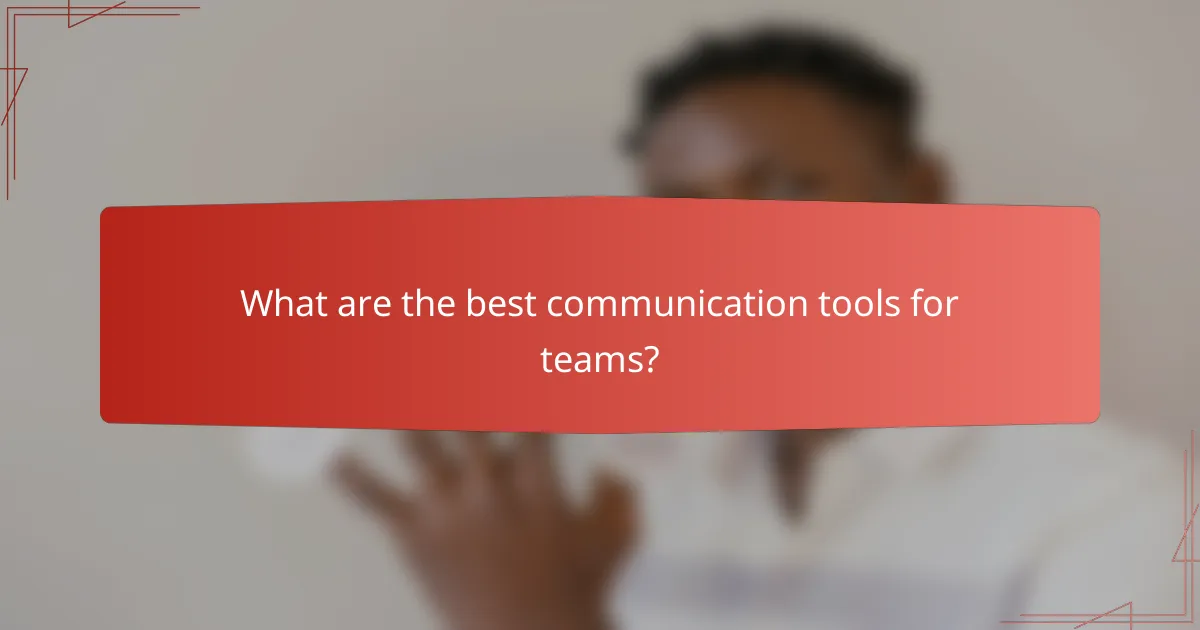
What are the best communication tools for teams?
The best communication tools for teams enhance collaboration, streamline workflows, and facilitate feedback. Popular options include Slack, Trello, and Zoom, each serving distinct purposes in team communication and project management.
Slack for real-time messaging
Slack is a powerful tool for real-time messaging that allows teams to communicate instantly. It supports channels for different topics, direct messaging, and file sharing, making it easy to keep conversations organized.
To maximize Slack’s effectiveness, create dedicated channels for specific projects or teams. Avoid clutter by using threads for side discussions, and leverage integrations with other tools like Google Drive or Asana to centralize information.
Trello for project management
Trello is a visual project management tool that uses boards, lists, and cards to organize tasks. Teams can easily track progress, assign responsibilities, and set deadlines, providing a clear overview of project status.
To get the most out of Trello, establish a consistent workflow and use labels to categorize tasks. Regularly review and update boards to reflect current priorities, ensuring everyone stays aligned on objectives.
Zoom for video conferencing
Zoom is a widely used video conferencing platform that facilitates virtual meetings and webinars. It offers features such as screen sharing, breakout rooms, and recording capabilities, making it suitable for both small team meetings and large presentations.
For effective Zoom meetings, set a clear agenda and share it in advance. Encourage participants to mute their microphones when not speaking to minimize background noise, and utilize the chat feature for questions during presentations to keep discussions organized.
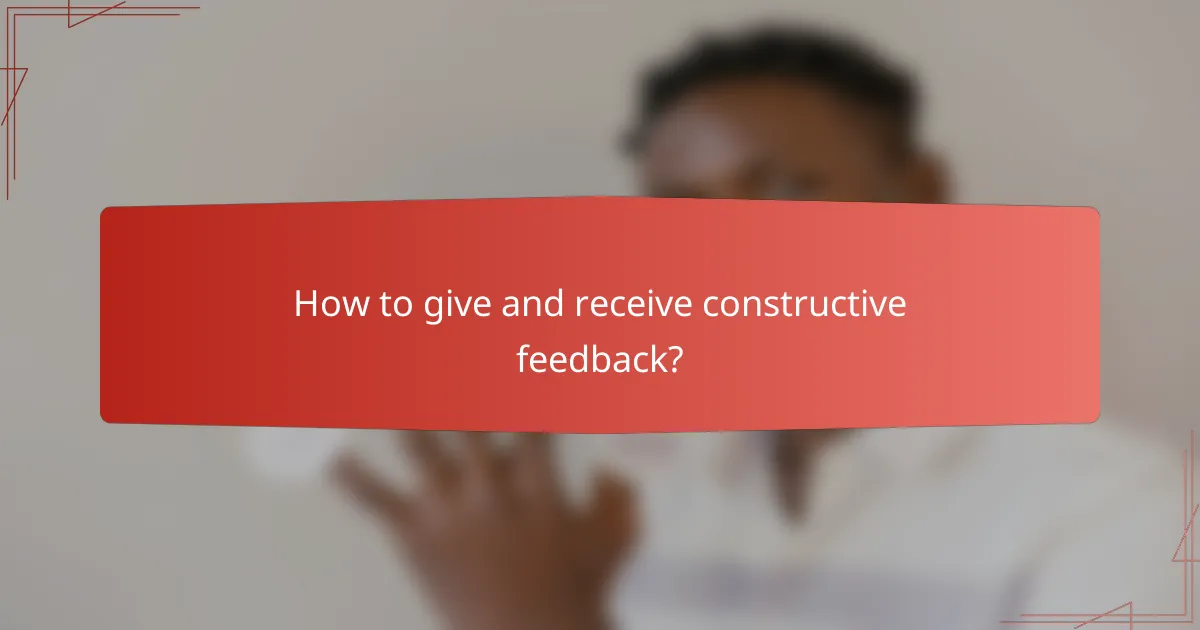
How to give and receive constructive feedback?
Constructive feedback involves providing specific, actionable insights that help individuals improve their performance while also being open to receiving similar input. This process fosters a culture of growth and collaboration within teams.
Use the “sandwich” method
The “sandwich” method involves framing feedback by starting with a positive comment, followed by the constructive criticism, and concluding with another positive remark. This approach helps to soften the impact of the critique and makes it more palatable for the recipient.
For example, you might say, “Your presentation was engaging, but I think you could clarify your main points better. Overall, your enthusiasm really captured the audience’s attention.” This structure encourages receptiveness to feedback.
Focus on specific behaviors
When giving feedback, concentrate on specific actions rather than general traits. This clarity helps the recipient understand exactly what to change. Instead of saying, “You need to be more organized,” specify, “I noticed your reports often miss deadlines; setting reminders could help you stay on track.”
Specific feedback is more actionable and allows individuals to address particular areas for improvement, leading to more effective outcomes.
Encourage a two-way dialogue
Constructive feedback should be a conversation, not a monologue. Encourage the recipient to share their thoughts and feelings about the feedback. This dialogue can reveal insights into their perspective and foster a collaborative environment.
Ask open-ended questions like, “How do you feel about this feedback?” or “What challenges do you face in this area?” This approach not only helps clarify misunderstandings but also empowers individuals to take ownership of their development.
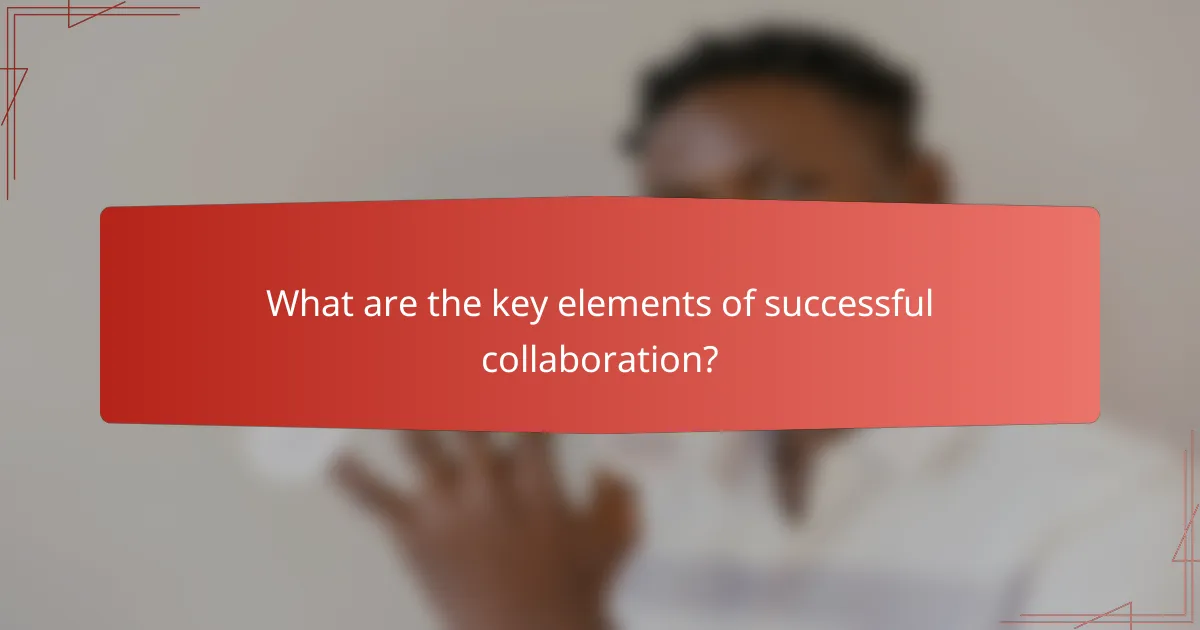
What are the key elements of successful collaboration?
Successful collaboration hinges on several key elements that foster teamwork and enhance productivity. These elements include clear goals, defined roles, and open communication, all of which create a cohesive environment for team members to thrive.
Clear goals and objectives
Establishing clear goals and objectives is essential for effective collaboration. These goals should be specific, measurable, achievable, relevant, and time-bound (SMART) to ensure everyone understands the desired outcomes.
For example, a project might aim to increase sales by 15% within six months. This clarity helps team members align their efforts and track progress, making it easier to adjust strategies as needed.
Defined roles and responsibilities
Clearly defined roles and responsibilities help prevent overlap and confusion among team members. Each person should know their specific tasks and how they contribute to the overall objectives.
A practical approach is to create a responsibility assignment matrix (RACI) that outlines who is Responsible, Accountable, Consulted, and Informed for each task. This ensures accountability and streamlines decision-making processes.
Open communication channels
Open communication channels are critical for fostering collaboration. Teams should utilize various tools and platforms, such as instant messaging, video conferencing, and project management software, to facilitate ongoing dialogue.
Encouraging regular check-ins and feedback sessions can help address issues promptly and keep everyone on the same page. It’s important to create a culture where team members feel comfortable sharing ideas and concerns without fear of judgment.
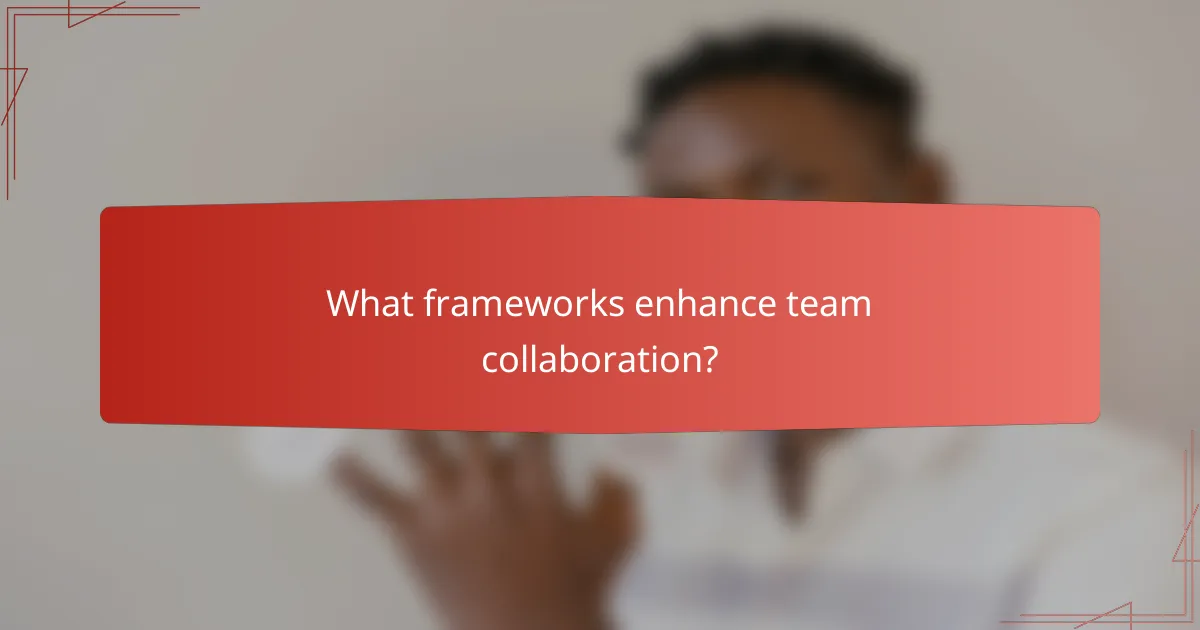
What frameworks enhance team collaboration?
Frameworks like Agile and SCRUM significantly improve team collaboration by promoting iterative progress, flexibility, and continuous feedback. These methodologies encourage open communication and structured roles, which help teams work more effectively towards common goals.
Agile methodology
Agile methodology focuses on delivering small, incremental changes rather than large, monolithic updates. This approach allows teams to adapt quickly to changing requirements and fosters collaboration through regular check-ins and feedback loops.
Key principles of Agile include prioritizing customer satisfaction, embracing change, and encouraging self-organizing teams. Teams often use tools like Kanban boards or sprint planning to visualize progress and maintain transparency.
To implement Agile effectively, teams should hold regular stand-up meetings and retrospectives to discuss progress and areas for improvement. Avoiding micromanagement and empowering team members to make decisions can further enhance collaboration.
SCRUM practices
SCRUM is a specific framework within Agile that defines roles, events, and artifacts to streamline project management. It emphasizes teamwork, accountability, and iterative progress through defined sprints, typically lasting two to four weeks.
In SCRUM, there are specific roles: the Product Owner, who defines project goals; the SCRUM Master, who facilitates the process; and the Development Team, responsible for delivering the product. Regular ceremonies, such as sprint planning, daily stand-ups, and sprint reviews, ensure continuous communication and feedback.
To maximize the benefits of SCRUM, teams should maintain a clear definition of done for tasks and ensure that all members understand their roles. Avoiding scope creep during sprints is crucial for maintaining focus and achieving objectives effectively.
